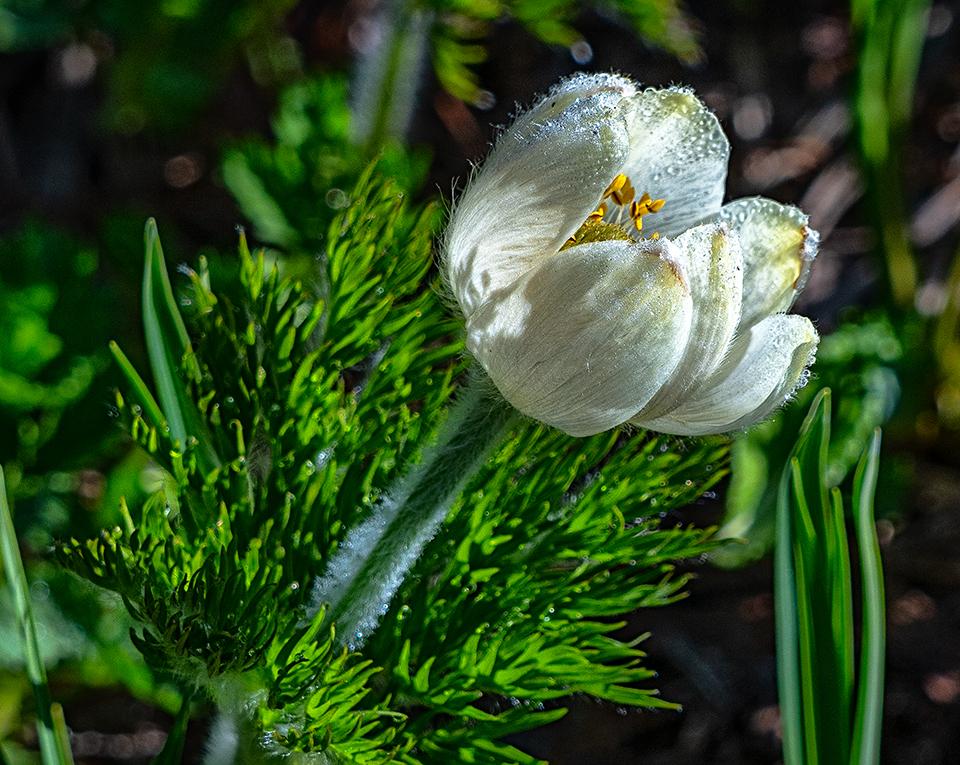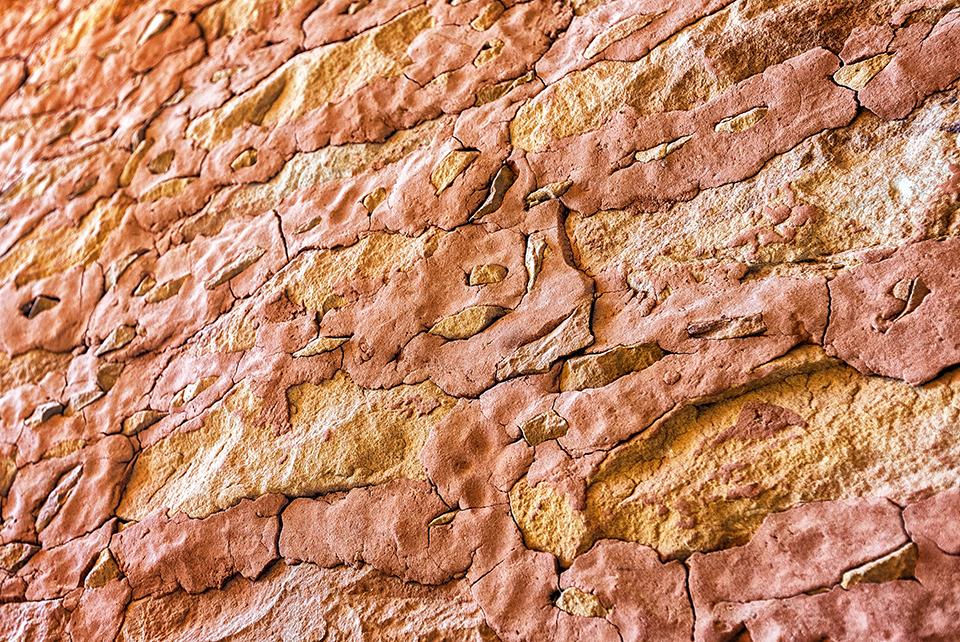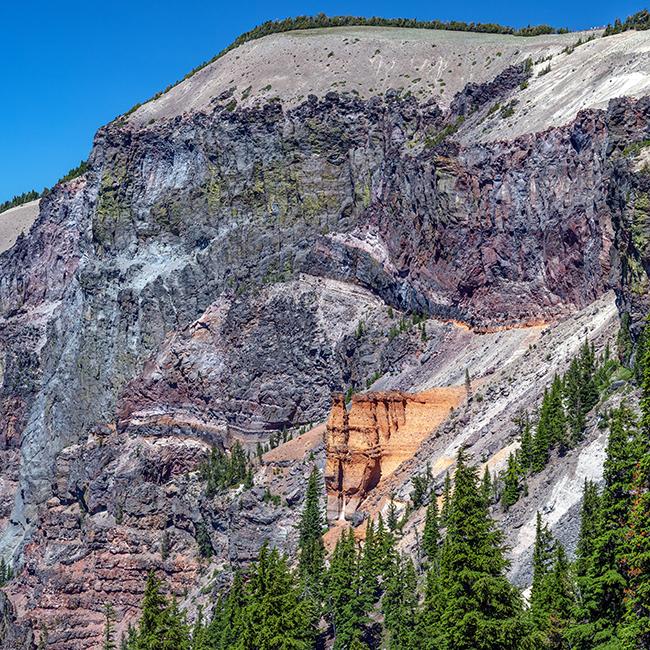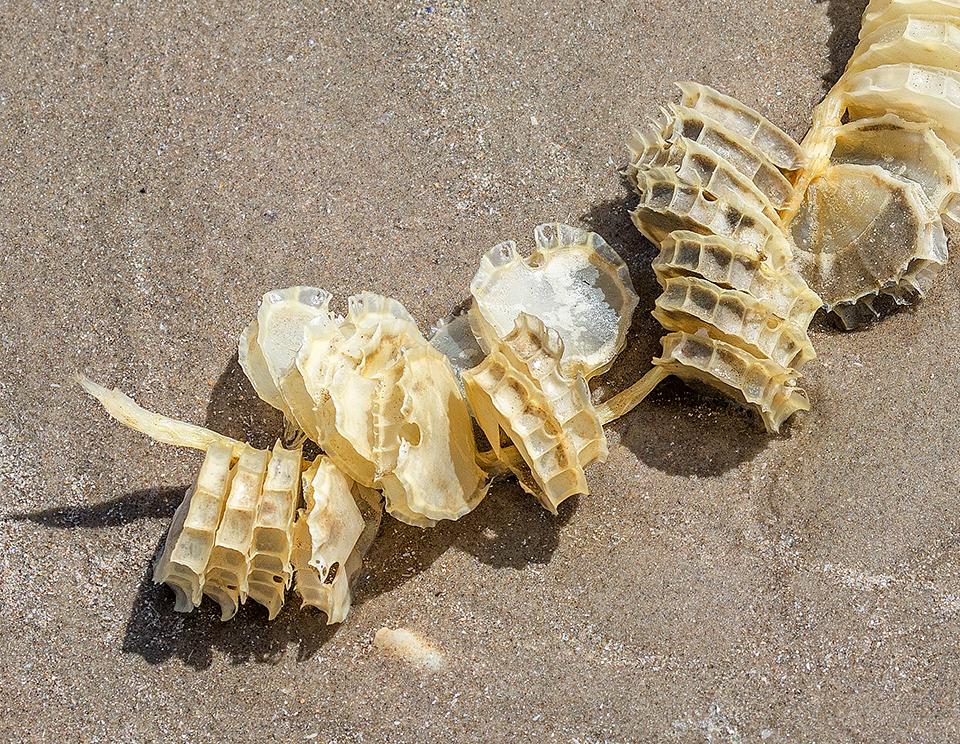
Pasqueflower bloom, Mount Rainier National Park / Rebecca Latson
By the time you read this month’s photo column, I will hopefully be visiting three different park units about which I can write future articles for the Traveler. For this month’s article, however, I thought I’d continue with what I started last month by urging you to take photos of things that interest you but which you might not know anything about (pardon the grammar). While these photos you take with whatever camera you have don’t have to be works of art, it doesn’t hurt to practice how you frame your images. You’ll not only become a better photographer more observant of your surroundings, but your interesting photo will be even more interesting / beautiful / amazing after putting a little thought into your composition. So, in addition to the facts I learned about my subjects you see in these photographs, I’m including tips on how I captured the shots.
Mount Rainier National Park (Washington state)
You’ve probably seen this particular wildflower pictured above in numerous other national parks. I certainly have. And they always make me smile. I’ve seen the pasqueflower in a couple of stages: it’s regular bloom, and then it’s seed head. The seed head is the most fun and definitely has the best nicknames, including mophead, mouse on a stick, and boy’s shaving brush. My own personal nickname for them is the “bedhead bloom”.
If you think the regular bloom looks a lot like a buttercup, then you’re on the right track, since it belongs to the buttercup family (Ranunculaceae). During early- through mid-summer, you can see meadows blanketed with pasqueflowers in bloom and in the seed head stage in both the Sunrise and Paradise areas of the park.
To get more than just a quick snapshot, I “filled the frame” with my flower find. Filling the frame means moving or zooming in until the flower or flowers cover most of your composition.

I also got a cool backlit shot of the flower’s seed head, with the sun shining on the flowers’ sides and backs to highlight the seed head details.
Mesa Verde National Park (Colorado)

Looking up at a tower in Cliff Palace, Mesa Verde National Park / Rebecca Latson
As you wander through the amazing cliff dwellings built by the Ancestral Pueblo people within what is now Mesa Verde National Park, have you ever wondered what materials they used and how they constructed these beautiful dwellings, both on the ground and beneath overhanging cliffs?
According to the National Park Service website for this park, “Sandstone, mortar and wooden beams were the three primary construction materials for the cliff dwellings. The Ancestral Pueblo people shaped each sandstone block using harder stones collected from nearby river beds. The mortar between the blocks is a mixture of local soil, water and ash. Fitted in the mortar are tiny pieces of stone called "chinking." Chinking stones filled the gaps within the mortar and added structural stability to the walls. Over the surface of many walls, the people decorated with earthen plasters of pink, brown, red, yellow, or white -- the first things to erode with time.” So, the next time you visit Mesa Verde, take a good, close look at the walls of the ruins and marvel at the Ancestral Puebloans’ creativity and architectural know-how.
For the image above, I singled out a one of the towers in Cliff Palace, then used a wide-angle lens looking upward for a different perspective.

Chinking detail in the mortar at Balcony House, Mesa Verde National Park / Rebecca Latson
Later, during a ranger-led tour of Balcony House, I moved in close for a frame-filling shot of chinking detail in one of the building walls.
Crater Lake National Park (Oregon)

The "battlements" of Pumice Castle, Crater Lake National Park / Rebecca Latson
Sure, the lake and Wizard Island are stars of the show, but if you’ve visited this national park, have you ever stopped to look at the steep sides of the lake? As you drive the park road and stop at all the view areas, there’s one area showcasing what is known as Pumice Castle.
Located on the east well of the crater, this “castle” with its orange-ish “turrets” were created by the welding together of super-hot volcanic rock and pumice spewed up from Mt. Mazama. Continued eruptions and rock falling from the air by the volcanic blast, as well as compaction and then exposure after Mt. Mazama collapsed to form what is now Crater Lake, brought forth this very cool “castle” on the caldera slope.
I could have singled out and captured a zoomed close-up of this volcanic formation, but opted instead to include a part of the environment and lake with the “castle” for scale and reference.
North Cascades National Park Complex (Washington state)

A noontime view at Diablo Lake Overlook, North Cascades National Park Complex / Rebecca Latson
If you’ve ever visited North Cascades National Park and driven Highway 20 through the park complex which includes Ross Lake National Recreation Area, you’ve probably stopped off at the Diablo Lake Overlook to view the beautiful, turquoise-hued water of the lake and Diablo Dam at the far end, surrounded by toothy mountains. The lake gets that beautiful color from the glacier-fed waters filled with “suspended fine rock particles” known as “rock flour”. The water color is especially vibrant during July, August, and September, when glacial melt occurs.
Believe it or not, while midday lighting is usually pretty harsh and not a favorite time for photographers, a midday photo at the Diablo Lake Overlook gave the lake brilliant saturation to really bring out that turquoise coloration.

Sunrise over Diablo Lake, North Cascades National Park Complex / Rebecca Latson
I also captured this lake early in the morning, during sunrise, for a slightly darker shade of turquoise to the water as sunlight bathed the mountain tops.
Padre Island National Seashore (Texas)

Lightning Whelk egg casing, Padre Island National Seashore / Rebecca Latson
Walk along the beach at this national seashore and you’ll probably see some strange things washed up from the Gulf of Mexico. The first time I ever saw a lightning whelk egg cast, I thought it was a molted snake skin until I looked closer. I was stumped for an identification. I tried describing it to the rangers at the Malaquite Visitor Center and the only thing I could think of was that it looked like a bunch of coke bottle caps on a string. I got a weird look from the ranger. Then, as I roamed around their mini museum, I actually saw what I was trying to describe. I was looking at a whelk egg casing, and I think my find was from a lightning whelk.
Whelks are gastropods of the family Buccinidae. The egg casings (sometimes called “mermaid’s necklace”) can be from one to three feet in length, one end of which is anchored to rocks, shells, or seafloor sand.
For this image, I wanted to get the length of the egg casing, so I created a “leading line” shot of the casing from top to bottom.

A closer look at a lightning whelk egg casing, Padre Island National Seashore / Rebecca Latson
I then followed up with a closer image showing more detail to the casings.
I’ve got plenty more fun facts than there’s room in this column, so I’ll stop here with a reminder to you to take your camera out into a National Park System unit and be curious. Impress your friends, family, and colleagues with newfound knowledge researched from something you photographed while in the park.
References
In addition to information found within the NPS.gov websites for each park, I used the following references.
https://www.wildflower.org/plants/result.php?id_plant=PUOC
https://www.nationalparksblog.com/pumice-castle-crater-lake-national-park/
http://npshistory.com/nature_notes/crla/vol11-2c.htm
https://en.wikipedia.org/wiki/Sinistrofulgur_perversum
https://www.beachcombingmagazine.com/blogs/news/egg-citing-finds



Comments
Once again thanks for an interesting column Rebecca.